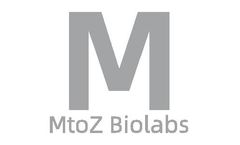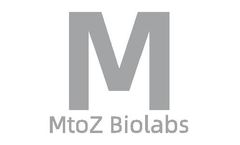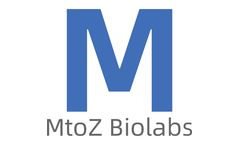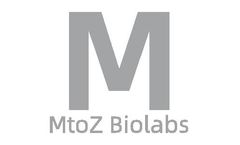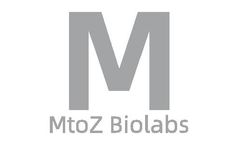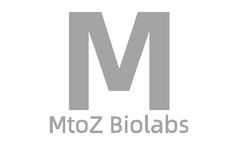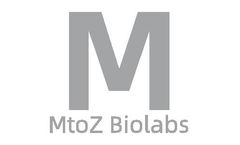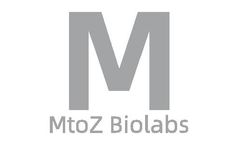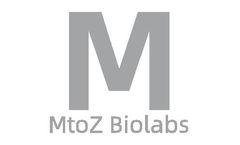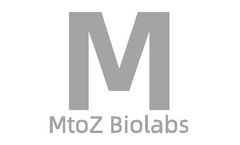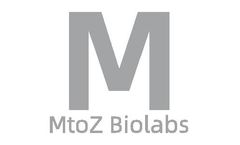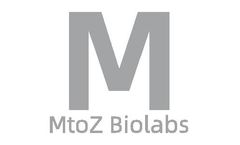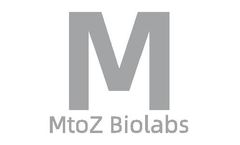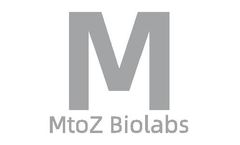Refine by
Mtoz Biolabs For Treatment Of Metastatic Bone Cancers Services
15 services found
by:MtoZ Biolabs based in, MASSACHUSETTS (USA)
Kinases, in simple terms, are enzymes that transfer the phosphate groups of ATP to substrates. Kinases catalyze the transfer of γ-phosphate groups of ATP to substrates, mediate most signal transduction, and regulate a variety of cellular activities, including proliferation, survival, apoptosis, metabolism, transcription, differentiation, and a wide range of other cellular processes. ...
by:MtoZ Biolabs based in, MASSACHUSETTS (USA)
Proteins play a pivotal role in the regulation, function, and structure of various human organs and tissues. The regulation of the synthesis and degradation of proteins is crucial for cell functionality. Protein turnover can exist in three states: equilibrium, pool expansion, and pool contraction. At equilibrium, the rate of protein synthesis matches that of degradation, leading to unchanged ...
by:MtoZ Biolabs based in, MASSACHUSETTS (USA)
The CUT&Tag analysis service utilizes cleavage and transposase tagging technology to precisely map the binding sites of transcription factors or histone modifications within the genome, facilitating research into DNA-protein interaction mechanisms. It provides an accurate solution for genomic and epigenetic studies. MtoZ Biolabs provides the CUT&Tag analysis service leveraging an advanced ...
by:MtoZ Biolabs based in, MASSACHUSETTS (USA)
T cells play a vital role in destroying pathogens and monitoring pathological cells. They are able to distinguish between self-antigens and non-self-antigens by surface T cell receptors (TCRs). Most human T cells express the classical TCRs, which consists of TCRα and TCRβ chains co-expressed with CD3 chains (γ, δ, ε, and ζ). ...
by:MtoZ Biolabs based in, MASSACHUSETTS (USA)
PROTACs represent a novel strategy for protein degradation that has gained prominence recently. Utilizing bifunctional molecules, PROTACs enable the targeted ubiquitination and subsequent degradation of proteins via the UPS. PROTACs can not only offer potential therapeutic applications for a variety of conditions, including cancer, immune dysregulation, viral infections, and neurodegenerative ...
by:MtoZ Biolabs based in, MASSACHUSETTS (USA)
Small molecule drugs, predominantly chemically synthesized drugs with molecular weight lower than 1000 Da. These drugs are characterized by their widespread use and mature theoretical foundations. Statistically, small molecule drugs comprise about 98% of commonly used medications. ...
by:MtoZ Biolabs based in, MASSACHUSETTS (USA)
Antibody therapies leverage human immune system antibodies to treat diseases by targeting specific proteins on pathogens or abnormal cells with exceptional precision. The development of antibody therapies has evolved from early polyclonal sera to monoclonal antibodies, and now to genetically engineered antibodies, focusing on enhancing drug safety, effectiveness, and manufacturing ...
by:MtoZ Biolabs based in, MASSACHUSETTS (USA)
Protein-based macromolecular drugs, typically organic compounds with molecular weights exceeding 1000, depend on cellular biosynthesis and are also known as biologics. Compared to traditional small molecule drugs, protein drugs are characterized by their high potency, strong specificity, low toxicity, clear biological function, and conducive to clinical application. Protein drugs are the ...
by:MtoZ Biolabs based in, MASSACHUSETTS (USA)
The immunopeptidome comprises all short peptides presented on the cell surface by HLA-I and II molecules for T-cell recognition. Immunopeptidomics analysis aims to explore the dynamics and composition of both type I and II immune peptides. Comprehensive characterization of the immunopeptidome aids in developing new therapies for cancer, immune diseases, and infectious diseases. ...
by:MtoZ Biolabs based in, MASSACHUSETTS (USA)
Ion channels are made up of special proteins produced by cells, which are aggregated and embedded in the cell membrane, forming pores occupied by water molecules. These pores are the channels for water-soluble substances, which can quickly enter and exit the ...
by:MtoZ Biolabs based in, MASSACHUSETTS (USA)
Receptors are biomolecules that can bind with hormones, neurotransmitters, drugs, or intracellular signaling molecules and are capable of inducing changes in cellular function. Receptors are categorized based on their cellular location into cell surface receptors and intracellular receptors. Each receptor typically has two active sites: one that recognizes and binds to the ligand and another ...
by:MtoZ Biolabs based in, MASSACHUSETTS (USA)
Humans are highly organized systems comprised of approximately 3.72×1013 cells of various types, which maintain proper organ function and normal cellular homeostasis. Despite significant and revolutionary discoveries in the field of cell biology, the heterogeneity of cells still requires further investigation. Single-cell RNA sequencing (scRNA-seq) has become the latest method for revealing the ...
by:MtoZ Biolabs based in, MASSACHUSETTS (USA)
PROTACs represent a novel strategy for protein degradation that has gained prominence recently. Utilizing bifunctional molecules, PROTACs enable the targeted ubiquitination and subsequent degradation of proteins via the UPS. PROTACs can not only offer potential therapeutic applications for a variety of conditions, including cancer, immune dysregulation, viral infections, and neurodegenerative ...
by:MtoZ Biolabs based in, MASSACHUSETTS (USA)
One of the main obstacles in drug development is how to deliver drugs effectively to target cells. In general, macromolecules such as proteins and mRNA cannot penetrate the cell membrane because the cell membrane has acquired protective mechanisms through evolution. However, viruses can deliver their genetic material into cells. Therefore, viruses and virus-like particles are widely used to ...
by:MtoZ Biolabs based in, MASSACHUSETTS (USA)
The inauguration of monoclonal antibodies (mAbs), derived from mice, were immunogenic in humans. These molecules were first synthesized in 1975 by Georges Köhler and César Milstein through the use of hybridoma technology. Later, in 1984, another milestone was achieved with the production of chimeric human antibodies via recombinant DNA technology. Hybridoma technology facilitates the creation of ...

